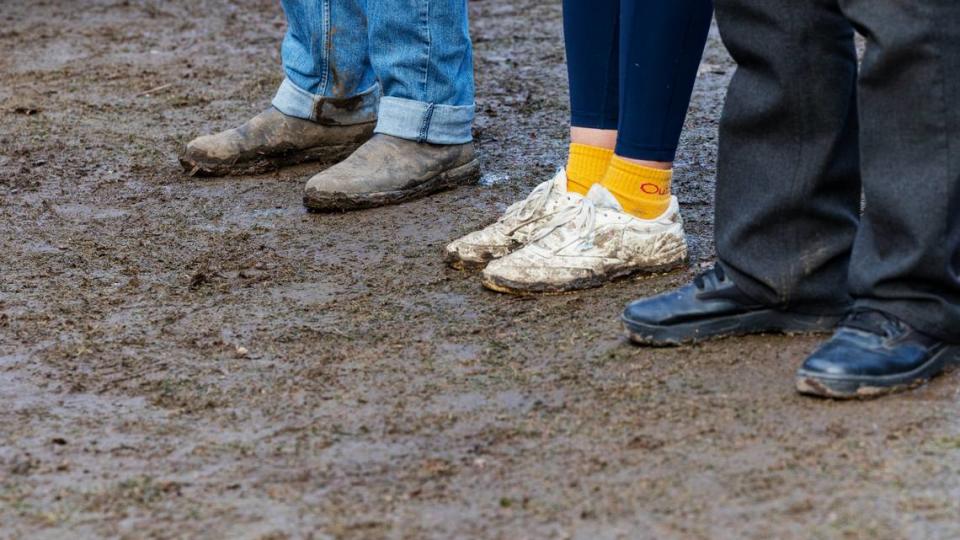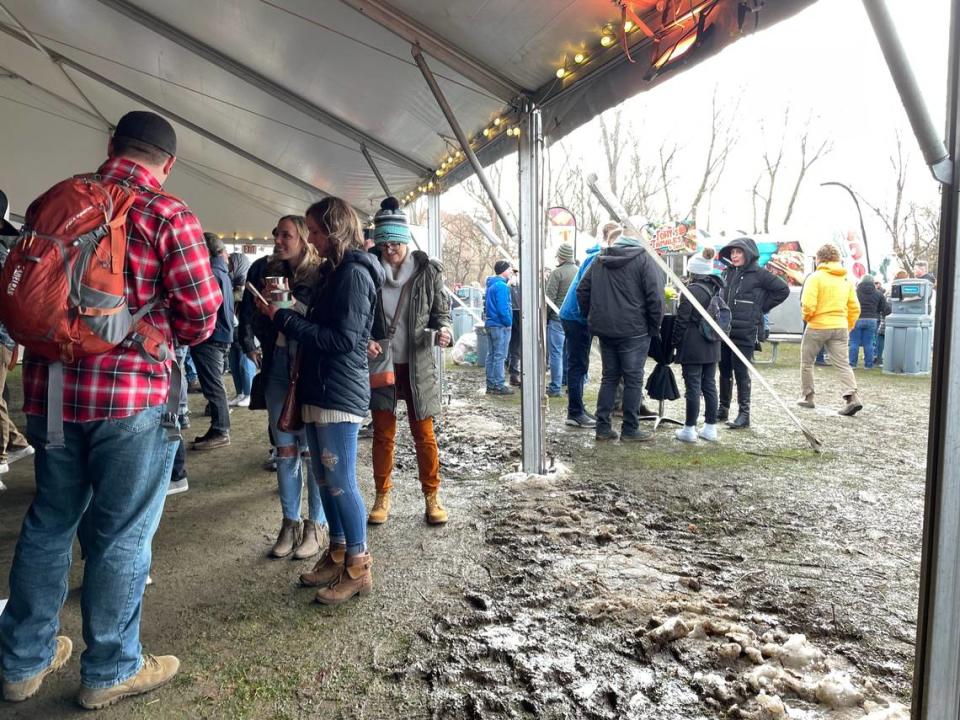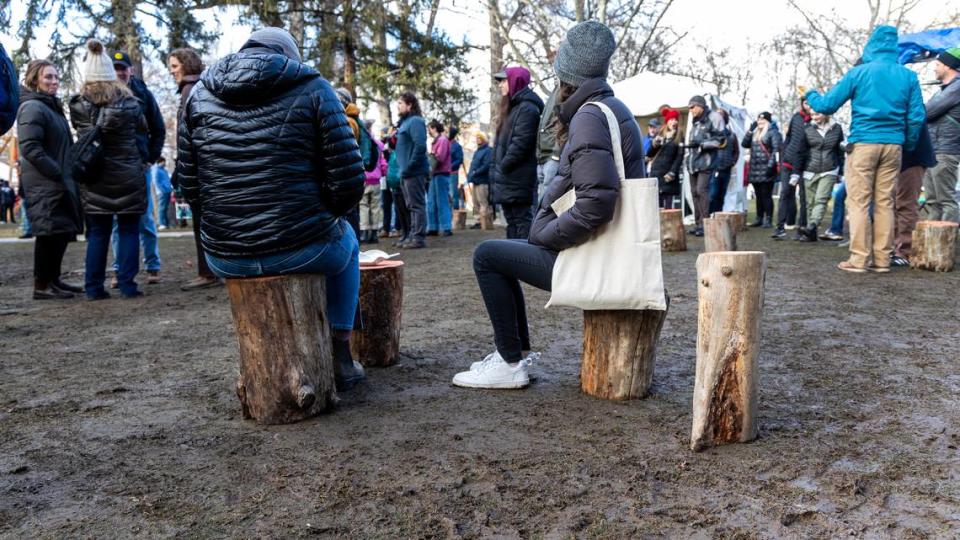Boise’s Treefort did a record crowd — and record park damage. But no one’s ‘freaking out’
Soggy weather and large crowds at Treefort Music Fest helped create “a perfect storm” for historic turf damage at Julia Davis Park, a Boise parks official says.
Treefort organizers will pay for repairs — likely a five-figure bill — and plan to bring the festival back next spring.
“They’re an amazing partner,” Boise Parks and Recreation Director Doug Holloway said. “They did everything that they were asked to do. And Mother Nature didn’t cooperate, and this is what we ended up with.
“It is fixable,” Holloway added. “It’s grass, right?”
The 11th iteration of the event was the biggest-attended Treefort yet, co-founder Eric Gilbert said. Reshuffling after a decade, the festival relocated its heart to Julia Davis Park, 700 S. Capitol Blvd. — and not only because there’s more space. Treefort’s longtime hub at 12th and Grove streets is being turned into apartments, which caused the Main Stage, the Alefort beer tent and other attractions to move to the park.
Treefort featured more than 500 acts rocking venues across downtown Boise. Attendance at Julia Davis Park alone averaged about 12,000 per day, Gilbert said — except on Saturday, when it climbed closer to 20,000.
Treefort lured 30,000 unique attendees over its five days, according to organizers, an increase of 5,000 from last year’s festival. The average daily attendance was 15,000, with Saturday seeing nearly 23,000.

Outdoors, festivalgoers faced wet conditions in late March.
“We had, what, rain virtually every day of the event?” Holloway said.
Select high-traffic areas — around the Main Stage and Alefort, for example — became increasingly muddy, with grass obliterated.
“I was actually impressed,” Gilbert said, “that most of the park seemed intact.”
‘Freaking out? No.’
Even during drier, warmer months, large events can put a beatdown on turf — whether it’s Art in the Park at Julia Davis Park or the Spirit of Boise Balloon Classic at Ann Morrison Park. “If you walk into Julia Davis after Art in the Park,” Holloway said, it looks “like a bomb went off.”
But because of the time of year, length of festival, number of attendees and “lots of bad weather,” Holloway said, Treefort did more grass damage than any other event at a Boise park.
“We have not experienced any other special-event mitigation repairs similar to this year’s Treefort,” he said.
“... But are we freaking out in Parks and Recreation? No. Our horticulture team is calm, cool and collected, and they believe we can get on top of this and fix it.”
(Note: Parks and Rec has no record of what the now-defunct Boise River Festival entailed decades ago, Holloway said.)

Beer money and park repairs
Treefort organizers rented Julia Davis Park for $15,000. They also agreed to pay 12% of alcohol sales to the city — roughly $45,000, Gilbert said. That 12% has been earmarked for a project that will rebuild the Rose Garden at Julia Davis Park — “probably a couple hundred thousand dollar renovation,” Holloway said. The Davis family has been raising money through private donations, he said.
As would be the case for any park event rental, Treefort also agreed to pay for all turf damage above and beyond a normal day’s wear and tear, Holloway said.
Because Boise officials estimate the cost of overseeding and replacing sod at more than $10,000 for the Treefort damage, Parks and Rec will not handle the project internally. Instead, the city will receive bids Wednesday, Holloway said. The hope is that repairs can be completed faster that way, preparing Julia Davis Park for events starting in late April, then continuing in May and June.
Each year at Simplot Sports Complex, the U.S. Youth Soccer Far West Regional Championships averages about $3,000 in mitigation, Holloway said. The Spirit of Boise Balloon Classic required about $2,600 last year (and significantly less in other years); the St. Luke’s FitOne run at Ann Morrison Park and the Hyde Park Street Fair at Camel’s Back Park cost in the few hundreds of dollars when mitigation is required, he said.
“Again, all of these events are at different times of the year than Treefort,” Holloway said, “and are generally bad-weather free. And other than Far West, none last as long as Treefort.”

Boost to economy
Trampled grass and mud “seems like a pretty small price to pay” when the economic boost from the event March 22-26 is considered, Gilbert said. “Early estimates are over $8 million of economic impact spent in the local economy,” he said. “If you do the quick math, that’s almost $500,000 in sales tax — of people spending money at Treefort — contributed to the government coffers, however you want to look at that. Not to mention all the downtown businesses.”
Holloway declined to guess how much the turf repair will cost Treefort organizers. Gilbert said he didn’t think the monetary hit would threaten the festival’s future. “Of course there’s a number that would sink the ship,” he said, “but I don’t think this is going to be it.”
Added Holloway: “I would just use this year as your budgeting barometer, and say, ‘If we get this kind of weather in another year, we know what it’s probably going to end up costing us to repair the damage.’ ”
Ultimately, Gilbert said, organizers gained insights about how to deal with wet park conditions.
“Moving forward,” he said, “... I think we have a better idea how to get in front of damage. That saves us money, and it protects the park, and it improves the experience.”

